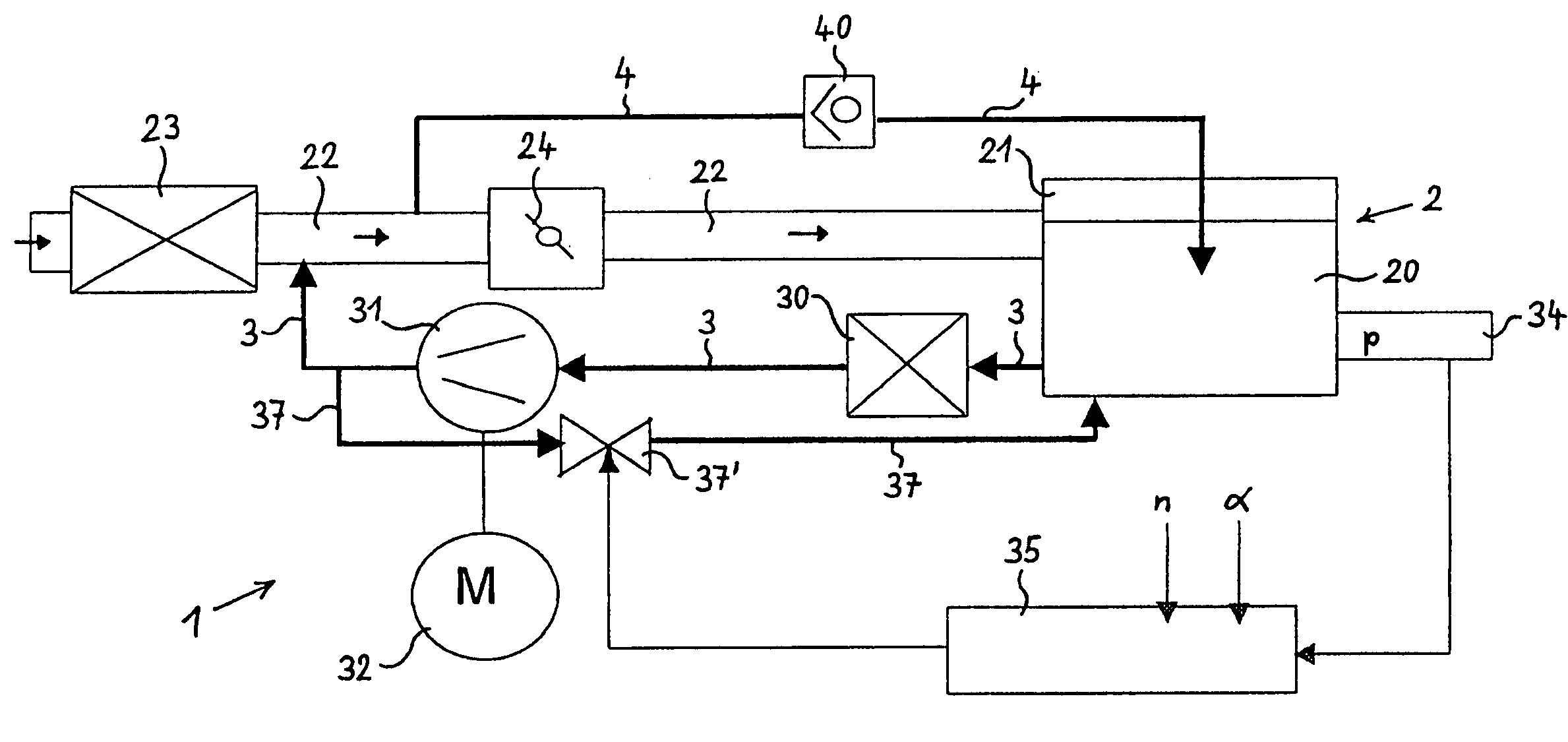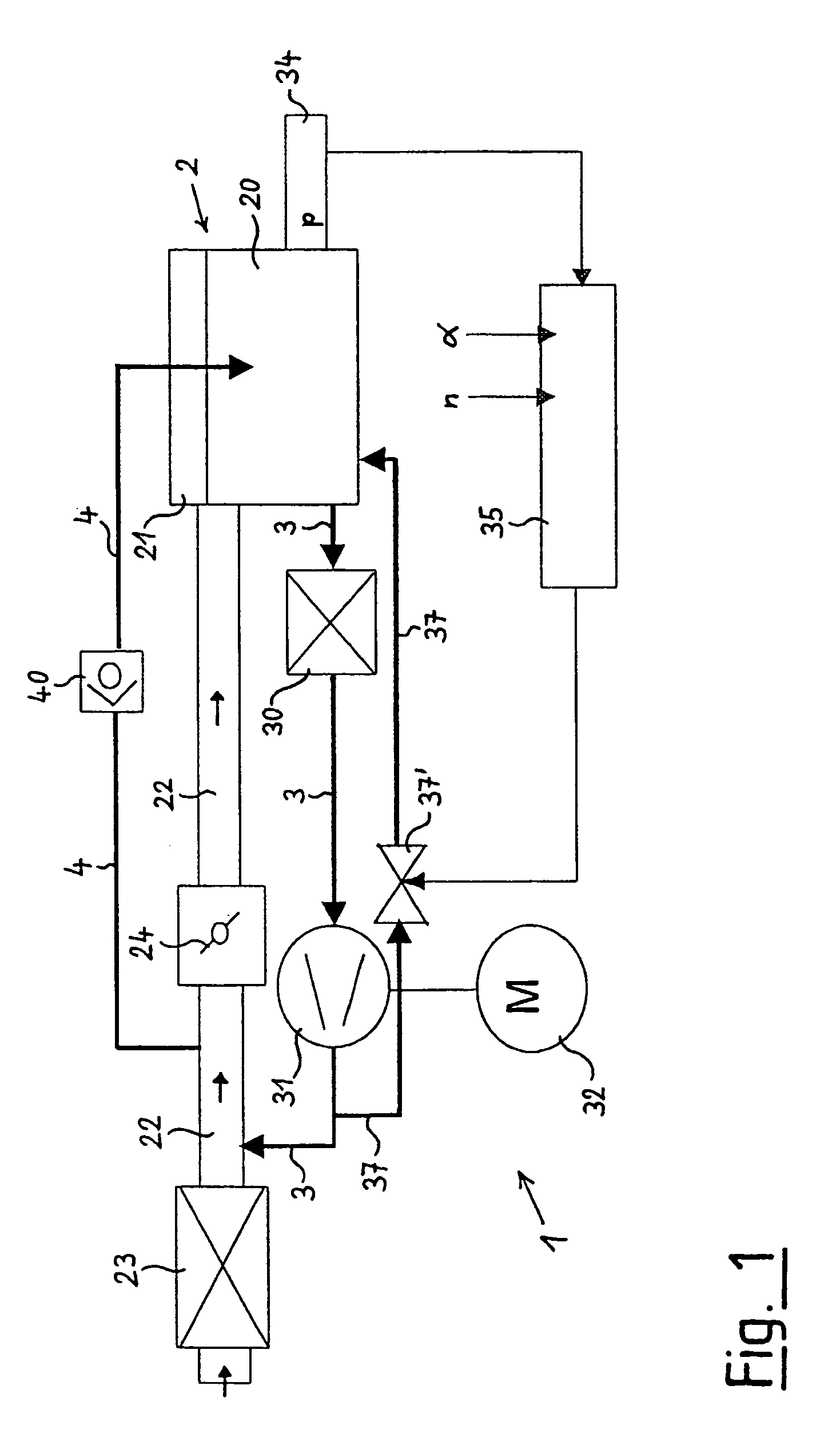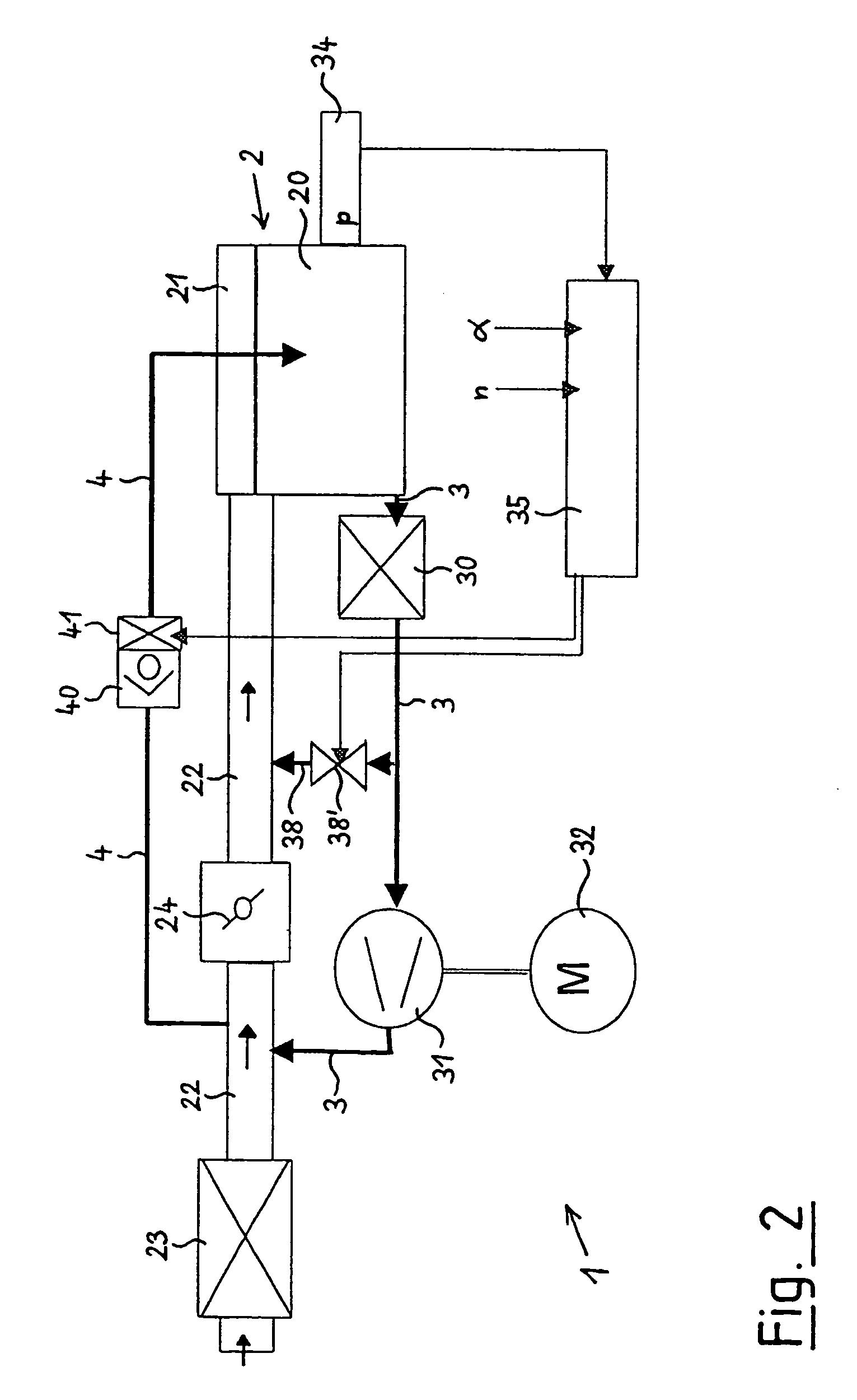Device for the ventilation of the crankcase of an internal combustion engine
a technology for internal combustion engines and crankcases, which is applied to internal combustion piston engines, engine components, and non-fuel substance addition to fuel, etc., can solve the problems of reducing the efficiency of the oil-mist separator, the danger of excess pressure developing in the crankcase, and the operation drawbacks, so as to reduce the load on the suction pump and the drive motor, and the service life is unlimited
- Summary
- Abstract
- Description
- Claims
- Application Information
AI Technical Summary
Benefits of technology
Problems solved by technology
Method used
Image
Examples
first embodiment
[0041]The bypass line 37 running from the pump 31 to the crankcase 20 in the apparatus 1 is not applicable; instead, a branch line 38 branches off from the vent line 3 to the pump unit 31 at a point upstream of the oil-mist separator 30 and, via a regulating valve 38′, ends in the intake pipe 22 at a point downstream of the throttle valve 24. A further difference is that, in this case, the check valve 40 in the vent line 4 is combined with a remote-controllable shut-off valve 41.
[0042]In its remaining parts, the apparatus according to FIG. 2 is identical with the embodiment shown in FIG. 1.
[0043]The regulating valve 38′ in the branch line 38 running from the outlet of the oil-mist separator 30 to the intake pipe 22 downstream of the throttle valve 24 is adjusted by the regulator 35 according to the pressure p in the crankcase, the crankshaft speed n and the throttle valve position α. Herein, the position of the valve 38′ is adjusted such that the valve 38′ is in the open position wh...
third embodiment
[0045]FIG. 3 of the drawing shows the apparatus 1, differing from the embodiment according to FIG. 2 in two additional elements. These additional elements are, on the one hand, a branching valve 39′ that is incorporated downstream of the pump unit 31 in that section of the vent line 3 that is running to the intake pipe 22. A return line 39 is running from the branch outlet of the branching valve 39′ to the crankcase 20.
[0046]The second additional element is the fact that, in this embodiment, the pump unit 31 is power-controlled. To achieve this, the regulator 35 is likewise designed as an electric switch or voltage regulator that is adjusted according to the pressure p in the crankcase, the crankshaft speed n and the throttle valve position α. The regulator 35 acts upon the performance of the engine in a controlling manner, thus regulating the power of the pump unit 31.
[0047]In its basic operating state, the apparatus 1 according to FIG. 3 is operated in the same ways as is the appa...
PUM
 Login to View More
Login to View More Abstract
Description
Claims
Application Information
 Login to View More
Login to View More - R&D
- Intellectual Property
- Life Sciences
- Materials
- Tech Scout
- Unparalleled Data Quality
- Higher Quality Content
- 60% Fewer Hallucinations
Browse by: Latest US Patents, China's latest patents, Technical Efficacy Thesaurus, Application Domain, Technology Topic, Popular Technical Reports.
© 2025 PatSnap. All rights reserved.Legal|Privacy policy|Modern Slavery Act Transparency Statement|Sitemap|About US| Contact US: help@patsnap.com



